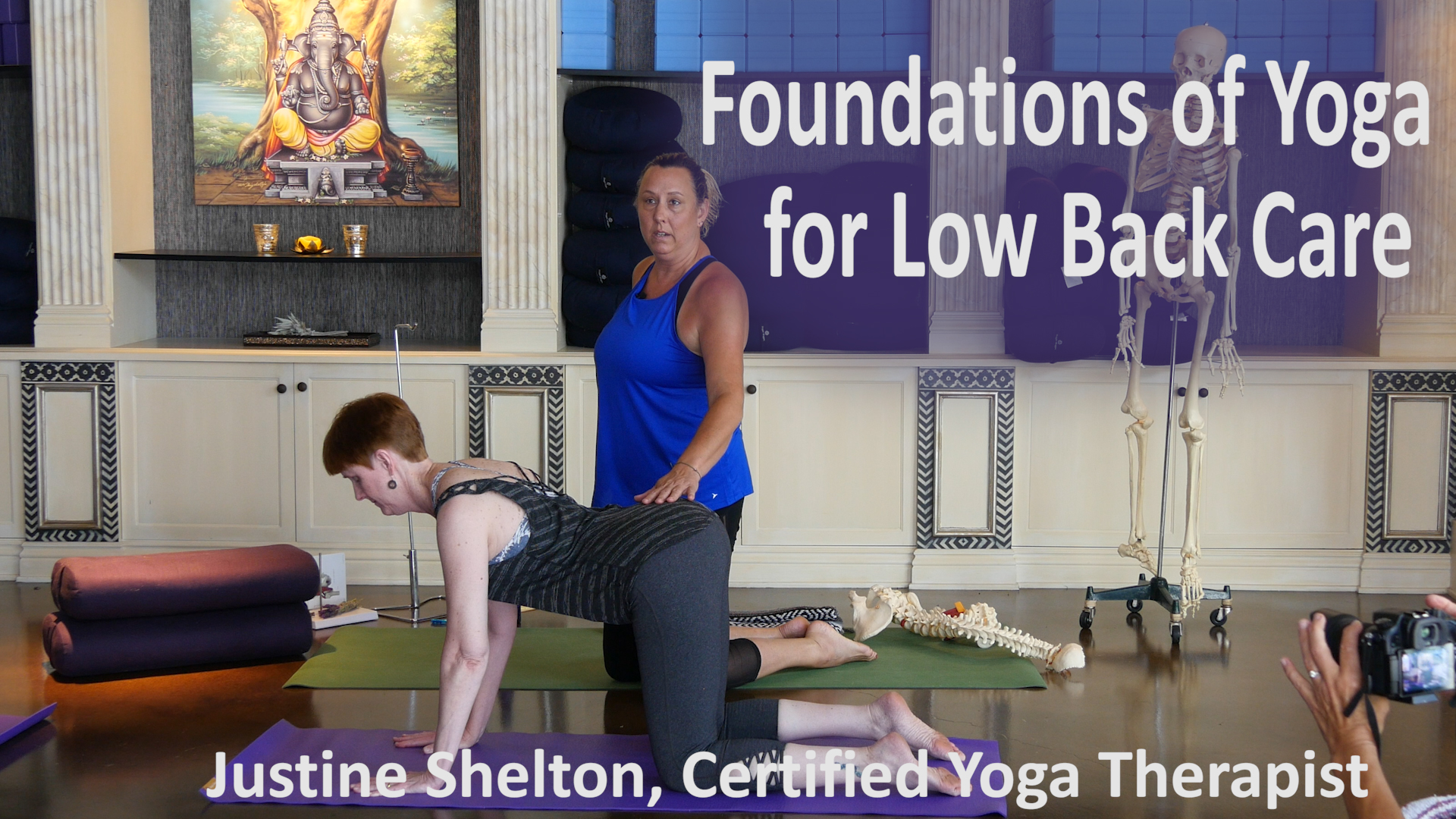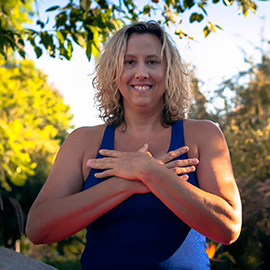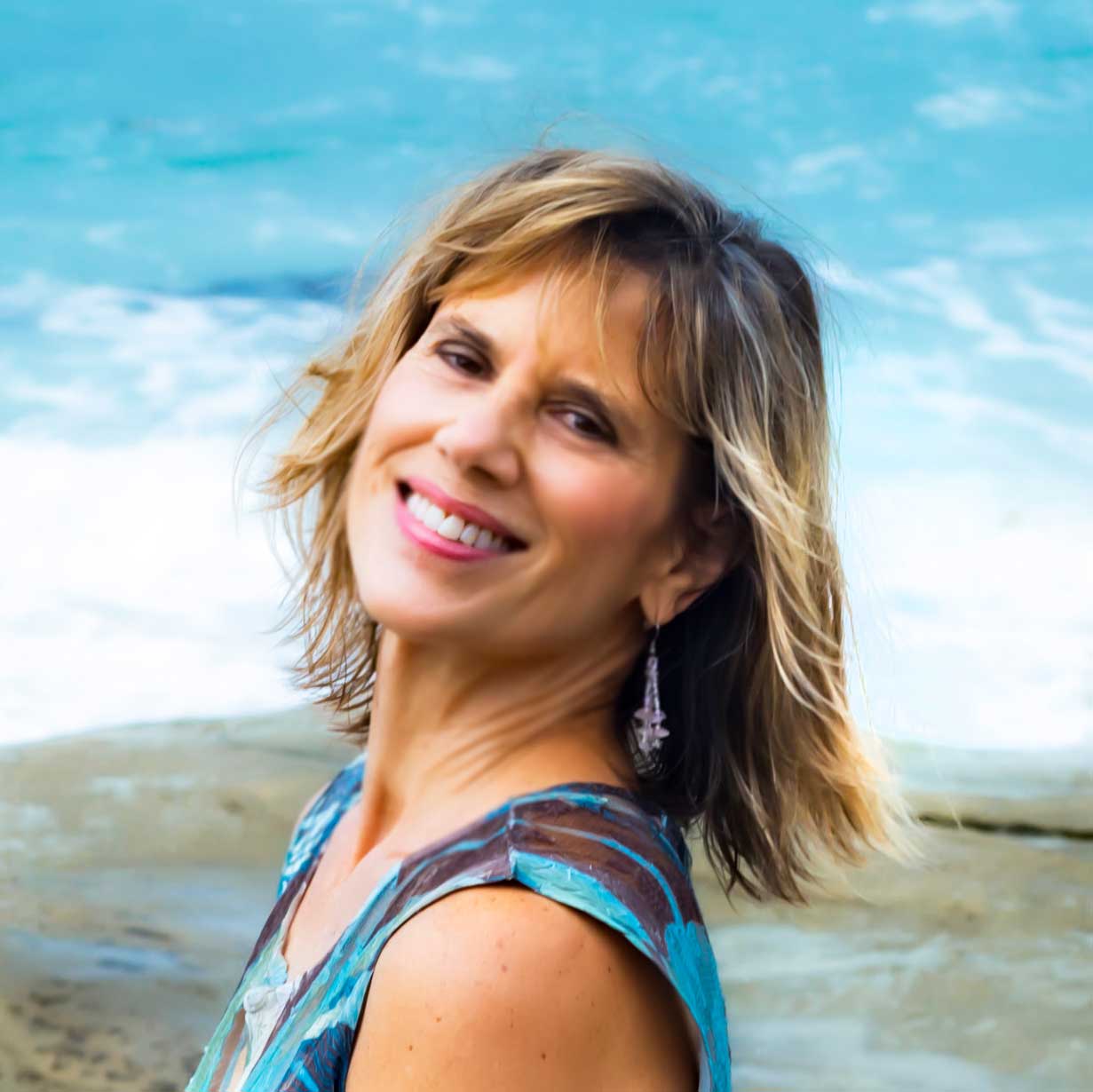What are the Forward Bending Guidelines for a Herniated Disc?
Question
For a herniated disc, modifications include forward pelvic tilt. It was my understanding that the pelvis should be rolled back to straighten the lumbar spine to alleviate pain in that area. Please clarify this for me.

Bending Guidelines for a Herniated Disc
There is a running joke in the Yoga therapy world that every question can be answered with ‘It depends.’ Used to drive me crazy when Gary Kraftsow, my Master Teacher, would answer that way…..but I can’t tell you how often it comes out of my mouth when I mentor my Yoga therapy students!!
The Angle of the Herniated Disc Bulge determines the Safest Movement
Generally speaking, lumbar discs tend to bulge posterolaterally (to the back, slightly to the side of the spinal cord) which is why we don’t want that undue pressure on the anterior portion of the disc. (I have a disc that bulges straight back to the cord – rare, because the ligamentum flavum is strong and usually prevents that slippage. Lucky me!)
However, if a disc bulges forward (usually from an bad accident or a crazy, wild, extreme Yoga back bend, unfortunately – I’ve only worked with one like that in my career) then that pelvis rolling back to lengthen the back to lengthen the lumbar would be more appropriate when standing to release posterior pressure on the discs and bring the nucleus of the disc more centrally aligned, rather than pushing forward.
Yoga Movement Guidelines for a Herniated Disc
With a forward bend (standing or otherwise), the pelvis should be tilted forward so that the sacrum is moving in the same direction as the lumbar spine – otherwise there is a hinge point in the lumbar spine which puts added, undue stress on the anterior portion of the intervertebral discs, adding to the posterior pressure on the disc – which could cause a bulge or cause an already bulged disc to herniate.
As far as tucking, or rolling back the pelvis – it depends! If someone is standing in tadasana, and has an overly lordotic lumbar curve (sway back if you will), then rolling the pelvis back will help to elongate the lumbar curve and bring the spine more into balance. However, a standing forward bend would still necessitate the forward movement of the pelvis to keep the spine from hinging. I find tucking the pelvis more structurally beneficial to people with severe lumbar osteoarthritis or spinal stenosis, as it lengthens and slightly opens the posterior aspect of the vertebrae, allowing more room for the nerves as they exit the spinal column.
Caution: Seated forward bends are riskiest to the lumbar spine, as the hips are fixed so any brunt of the movement will go into the body.
The safest forward bend for disc damage of any kind in the lumbar spine is Apanasana, where the spine is completely supported by the floor.
The Role of the Hamstrings in a Herniated Disc
The hamstrings can be a major culprit it pulling the pelvis into posterior rotation in a forward bend, which is why it is safer to bend the knees if there are tight hamstrings (I instruct everyone to bend their knees, at least for the first few forward bends, to take the hamstrings out of the equation and stretch the musculature of the low back. Stretching the hamstrings while supine, with the back completely supported by the floor, is a safer option).
Keep in mind, I also work with pretty severe injuries and tend to always go for the safest common denominator!
Namaste,
Justine Shelton, Certified Yoga Therapist
Gentle Yoga sequence for Stronger Knees and Low Back Pain Relief with Justine Shelton, C-IAYT
Viniyoga has so many ways to adapt poses! This variation is therapeutic for the knees – we are strengthening the adductors (inner thighs) both while shortening the muscles as well as while lengthening the muscles. Pressing the soles of the feet together in this pose helps to strengthen the musculature around the sacroiliac (SI) joints, lifting the pelvis while doing this increases the strengthening benefits. The whole series helps to increase circulation to the musculature of the lower back – increased circulation can equal less pain! Be sure to listen at the end for instructions on what to do when your lower back is in acute pain. Enjoy!
Learn the Body Mechanics of Forward Bending and Strengthen your Back with Justine Shelton, C-IAYT
If you are 50+, your years of improper forward bending can be creeping up on you and you can feel it in your Low Back in the form of arthritis or other disc issues. You could take an Occupational Therapy class that actually teaches you the right way to bend forward… or you can watch this short video and re-educate yourself to this common but necessary body movement!
Forward Bending Can Make or Break your Back: Gentle Yoga Tips for Bending Safely with Yoga Vista
Back injuries and back pain can get aggravated by improper alignment when bending forward, and not just in a Yoga class. In every day life, we bend to pick and lift things up, put on our shoes, unplug a wall socket or get the dust bunnies from under the couch. These tips from Gentle Yoga Teachers, Justine Shelton and Sherry Zak Morris, will help keep your back safe when bending – whether standing or sitting.

Justine Shelton, Certified Yoga Therapist & Co-Founder of the Yoga Vista Academy
Justine is a graduate of the American Viniyoga Institute under the direction of Gary Kraftsow. She is the Co-Founder of the Yoga Vista Academy and author of their ‘Gentle Yoga for Low Back Care specialty certification program. Justine specializes in structural yoga therapy, specifically spinal disc injuries, back pain management, as well as joint therapy – including prehab and rehab for replacements.

Sherry Zak Morris, Certified Yoga Therapist and Co-Founder of the Yoga Vista Academy
Sherry is a Certified Yoga Therapist and has a proven track record for empowering and igniting passion for 50+ Yoga and wellness. A 3-Time Presenter at the annual Yoga Alliance Conference, the professional and trade association of the yoga world, her enthusiasm for serving those with movement limitations gained exposure for her Specialty Teacher Training Programs. Sherry’s work can be found on YouTube and in the Yoga Vista Online Video Library, YogaVista.TV, where she shares her special style of Energizing Yoga that is accessible to everyone!

